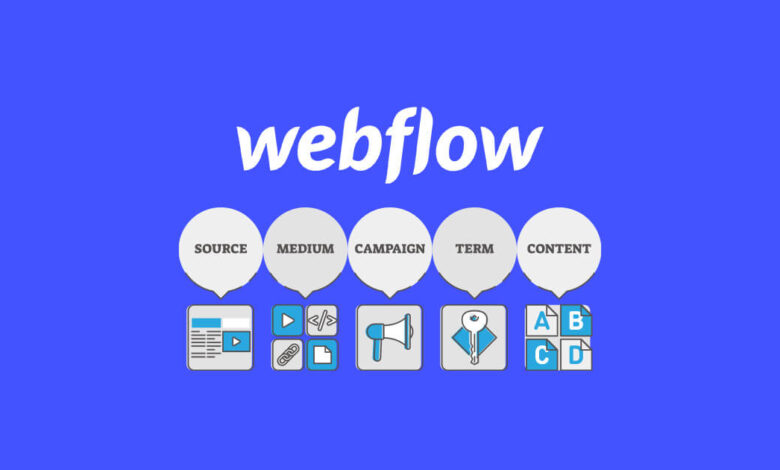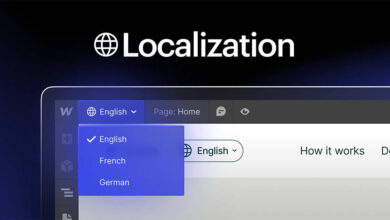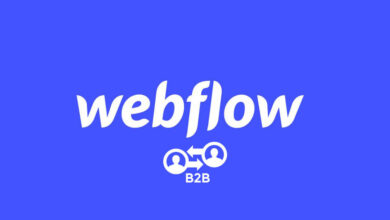How to Capture UTM Parameters in Webflow Forms?

Any sustainable business growth must identify which parts of the business strategy generate the best customers with a positive ROI to focus on the marketing channels that work and ditch those that don’t.
Though if you can’t measure which marketing campaigns generate leads and customers, how will you know where to focus your time and resources?
B2B and other businesses that rely on lead generation can easily measure marketing performance by tracking the UTM source of every lead in your CRM.
This post demonstrates how to capture UTM parameters in Webflow Forms and send that data in the form fields to display them inside your CRM for reporting.
Also read: how to reject non-business emails from Webflow form submissions?
Capture and push UTM to any form in Webflow + store parameters in a cookie when users move from one page to another
Copy-Paste Before body (Per page or entire website)
The code structure:
- Get URL parameters.
- Get Webflow form elements by jquery class selector and set the value to this UTM param X.
- It’s useful to store UTM params inside a cookie (To keep the UTM also if the user goes from page X to Y).
<!-- https://github.com/js-cookie/js-cookie -->
<script src="https://cdn.jsdelivr.net/npm/js-cookie@2/src/js.cookie.min.js"></script>
<!-- tribal code -->
<script>
const my_utmParameters = [
"utm_source",
"utm_medium",
"utm_campaign"
];
function getAllUrlParams(url) {
let obj = Object.fromEntries(new URLSearchParams(location.search));
return obj;
}
/* Check if Lead Cookie already exist */
var cookieExist = Cookies.get('Lead'); // => if false return undefined
/* get URL params object */
var getAllUrlParams = getAllUrlParams(); // return object
/*Convert a JavaScript object into a string */
var getAllUrlParamsJSON = JSON.stringify(getAllUrlParams);
/* Check if the url with utm_parameters */
let isEmpty = jQuery.isEmptyObject(getAllUrlParams); // return true/false
/* Case 1 - if the page with parameters & no cockie exsist */
if(!isEmpty && cookieExist === undefined){
/* Set lead object for the cockies */
console.log("Case 1 - parameters & no cockie exsist => Create Cockie");
/*
## Set Cookies ##
expires: If omitted, the cookie becomes a session cookie (This example)
*/
createLead();
setUTMformValues();
}/*end if*/
let compare = is_this_utm_equal_to_cockie_utm_values();
if(!isEmpty && cookieExist !== undefined){
/* it this utm params diff from current lead values create new lead*/
if(!compare){
/* Case 3 - cockie already exsist but with diff values Vs url utm parmas
(remove current Lead and generate new one)
*/
console.log("Case 3 - lead Exist, but with diff parames");
Cookies.remove('Lead');
createLead();
setUTMformValues();
}else{
console.log("Case 2 - lead exsist with this params");
setUTMformValues();
}
}
/* Case 4 - cookie Exist but page without any utm param */
if(isEmpty && cookieExist !== undefined){
console.log("Case 4 - cookie Exist but page without any utm param");
setUTMformValues();
}
function createLead(){
var lead = {
parameters: getAllUrlParams
};
/* if you want to add 2 days expires for example:
Cookies.set('Lead', 'lead', { expires: 2})
*/
Cookies.set('Lead', lead, { });
}
/* check if this utm url equal to the current values of cockie lead */
function is_this_utm_equal_to_cockie_utm_values(){
for (const this_utm_element of my_utmParameters) {
/* if utm_source exist */
let value_exsist = JSON.parse(cookieExist).parameters[this_utm_element] == getAllUrlParams[this_utm_element];
//console.log(`${value_exsist} - ${JSON.parse(cookieExist).parameters[this_utm_element]} compare to: ${getAllUrlParams[this_utm_element]}`);
if(value_exsist == false){
return false;
}
}/* end for loop */
return true;
}
function setUTMformValues(){
/* webflow form object (Add embed code under webflow designer inside FORM */
/*
<input type="text" class="utm_source" placeholder="utm_source" name="utm_source">
<input type="text" class="utm_medium" placeholder="utm_medium" name="utm_medium">
<input type="text" class="utm_campaign" placeholder="utm_campaign" name="utm_campaign">
*/
/* the value if the param is empty */
const empty_param_case = "null";
/* set feilds */
for (const this_utm_element of my_utmParameters) {
/* if utm_source exist */
set_utm_feild(this_utm_element);
}/* end for loop */
/* inner function */
function set_utm_feild(utm_type){
let utm_value = JSON.parse(Cookies.get('Lead')).parameters[utm_type];
let utm_nodes = document.getElementsByClassName(utm_type);
/* change all utm form feilds */
if(utm_nodes.length > 0){
for(var i = 0; i < utm_nodes.length; i++)
{
if(!!utm_value && utm_value !== undefined){
utm_nodes[i].value = utm_value;
}
else{
/* empty param for example ?utm_campaign= or ?utm_campaign */
utm_nodes[i].value = empty_param_case;
}
}/* end for */
}/* end if */
}// end inner set_utm_feild function */
}
</script>
Populate UTM parameters in a hidden field inside the form
To do that, insert an embed element inside the form, then add the following javascript code.
<script></script> <input type="hidden" class="utm_source" placeholder="utm_source" name="utm_source"> <input type="hidden" class="utm_medium" placeholder="utm_medium" name="utm_medium"> <input type="hidden" class="utm_campaign" placeholder="utm_campaign" name="utm_campaign">
You can repeat the second step in any form across your website, and you will receive UTM parameters from your marketing campaigns or affiliate links inside your form submissions.
Credit: Siton_Systems


